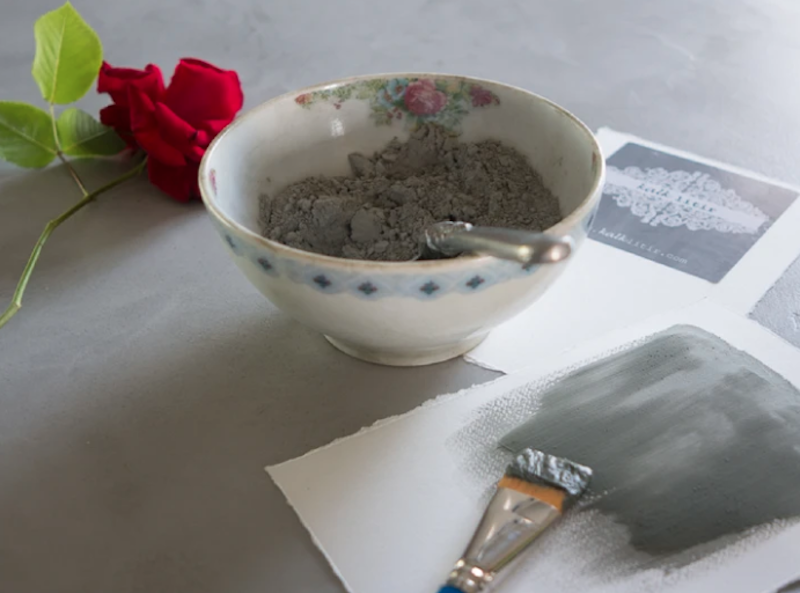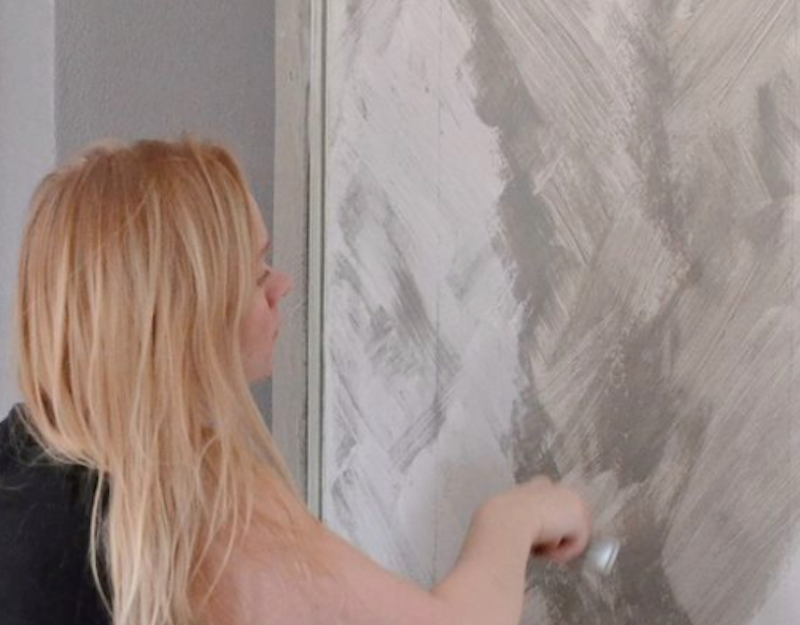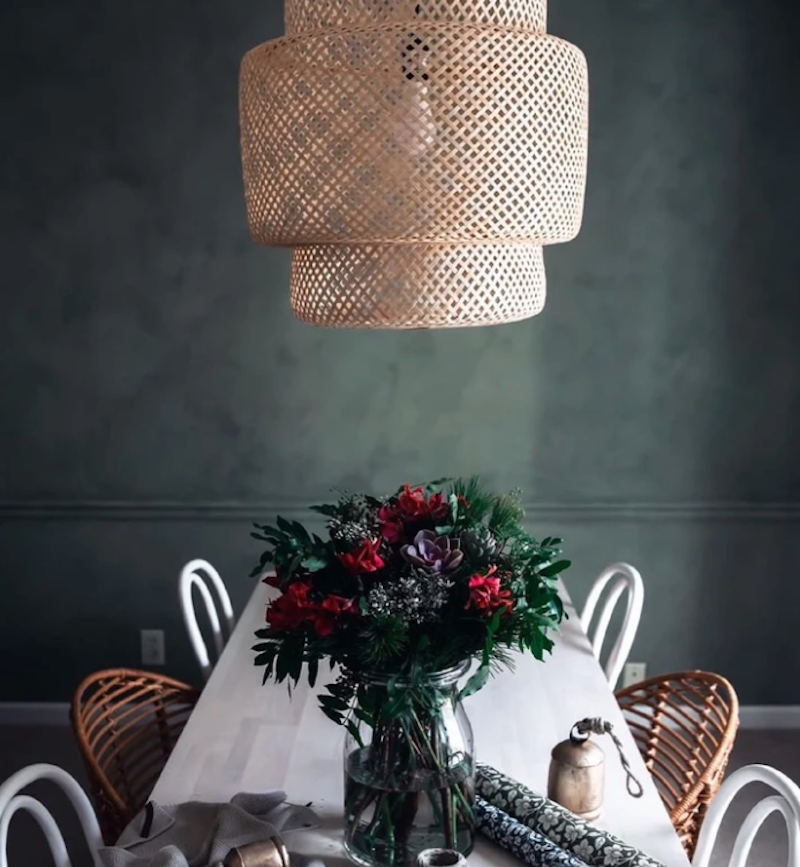Kalklitir - everything you need to know about the ecological lime paint
11.2.2021
Kalklitir is the lime paint that is both ecological and environmentally friendly. Here is everything you need to know about the Icelandic lime paint.

What is Kalklitir and why is it eco-friendly?
- Kalklitir is an Icelandic lime paint with natural minerals and pigments.
- The lime paint is VOC-free (doesn't contain volatile organic compounds). A wall painted with Kalklitir can breathe because it doesn't contain plastics.
- When the lime paint dries, only water evaporates. Once dry, it is completely harmless.
- The lime paint is odorless, and you can sleep in a room painted with Kalklitir the same day you paint.
- The lime paint provides a lively, 100 percent matte surface with a concrete feel.
- Delivered in powder form, which saves environmental and transport costs. You add the water yourself when you're ready to start painting.
- Sold in packages of 1 kg and 250 grams, which yield 2 liters and 0.5 liters of lime paint respectively. Two liters of lime paint are enough for two coats on 8-12 square meters, depending on the underlying surface.

Where is Kalklitir suitable?
- On surfaces painted with water-based matte or semi-matte paint or acrylic paint.
- On unpainted surfaces like concrete, gypsum, brick, and wood.
- On wallpaper with a matte surface, texture, and fiberglass wallpaper.
- On furniture. Reduce the amount of water for a thicker paint.
- On untreated terracotta pots.

Where is Kalklitir not suitable?
- On surfaces that are constantly damp.
- Where it is over 50 degrees hot, such as in a sauna.
- On floors. Lime paint is too soft and won't withstand wear.
- Directly on vinyl wallpaper or glossy wallpaper - it must be torn down first.
- On surfaces painted with glossy oil paint. The paint won't adhere. First, prime with water-based primer or acrylic-based primer.
- Directly on top of filler. The filler absorbs the paint, and the wall becomes patchy. First, paint with a water-based primer.

What preparations are needed before I start painting?
- Test if the wallpaper is so well-attached that it can be painted over. A good test is to "paint" a square meter with water - if bubbles form, the wallpaper either needs to be removed or painted with an acrylic primer that forms a film on top, preventing the wallpaper from coming loose.
- Kalklitir does not cover irregularities. Fill all holes and seams in the wall. Fill wallpapers with an uneven surface. Then paint with a water-based primer. An acrylic primer over filled surfaces provides the smoothest and best result. Filler quickly absorbs water, making the wall patchy if you don't cover what you’ve filled.
- Clean dirty surfaces. Kalklitir does not adhere to oily, dirty, and greasy surfaces.

What materials do I need to get before I start painting?
- A wide, preferably thick brush (at least 10x1 cm) suitable for lime painting, preferably with natural bristles.
- A smaller brush for hard-to-reach places.
- Tape to mask moldings and electrical outlets.
- Protective paper or plastic on the floor. No need to panic if it splatters nearby, the paint is water-soluble so just wipe it off while it’s still wet.
- A 3-5 liter bucket, preferably with a tightly-sealing lid.
- A whisk, works with a regular hand whisk, with an electric mixer, or a drill mixer for a drill. Wash immediately after use so you can use the whisk for anything afterward.
- A stick to stir the mixed paint with.
- A liter measure.

How do I mix the paint?
- Avoid inhaling lime powder. Preferably use a face mask when mixing the paint, or mix outdoors if the weather is nice. Good ventilation in the room to be painted is good both for the painter and the drying process.
- Set aside 1-2 tbsp paint in a tightly sealed bag. Save for any future needs, such as touching up your wall after a few years.
- Put 1.7 liters of tap water in the bucket with a lid.
- Add the powder slowly, stirring constantly (with a hand whisk, electric whisk, or drill whisk) for at least 10 minutes until the lumps dissolve.
- Don't worry if the paint hue looks different than expected, the color changes when it dries on the wall.
- If you need more than one bag for your painting project - mix all bags at once to avoid color differences. Remember to double the liquid amount and use a larger bucket.
- If you are painting a porous surface that absorbs a lot of liquid, such as an old log wall or unplastered wall, you can reduce the water amount a bit. The same applies if you're painting on a porous wallpaper and don't want it to get too soaked.
How do I paint with Kalklitir?
- First of all, make sure you have enough time. You cannot stop painting in the middle of a wall, the seam will be visible. If you need to pause, do it at the seam between two walls.
- Make sure all surfaces are dry, smooth, and clean before you start painting.
- Lime paint is mildly corrosive, so avoid getting the paint on your skin or in your eyes. If you get the paint or powder on your skin, rinse with water. If you get lime paint or powder in your eyes, rinse and seek medical attention.
- Stir the paint bucket with a stick occasionally throughout the painting process to prevent the pigment from settling at the bottom.
- Make sure to have a lot of paint in the brush all the time. Imagine applying the paint like glue, rather than scrubbing it in.
- Paint quickly with a wide brush. You can choose to paint with straight strokes up and down (gives a calmer surface) or with a cross technique by drawing x's on the wall (gives a more lively surface). Paint about 50-80 centimeters wide, from top to bottom. Then start again from the top while the paint at the edge of the previous stroke is still wet.
- When you have painted the entire wall, let it dry for about 2-6 hours, depending on humidity, before you can start on the next coat. Two coats are recommended for the best result.
- If the wall looks patchy when the paint dries - be patient. Do not start dabbing here and there, the paint will even out as it dries. Fix any irregularities when you paint the second coat. If it still looks uneven when the second coat has dried - paint a third coat.
- NOTE: While the paint is drying, absolutely no water should splash on the wall, as it will create white spots and the entire wall will need to be repainted.
What should I do when the paint has dried?
- Got leftover paint? Mixed paint can be stored in a bucket with a tightly-sealing lid - for example, your mixing bucket with a lid on, or a glass jar or bottle - for up to a year.
- Matte wall paints are a bit sensitive. If you know your wall is prone to, for example, sticky fingers, you can varnish it with matte varnish. The color will then become a bit darker. The wall must be completely dry before varnishing.
- If you've painted furniture, they may also need a protective varnish or wax.
- Enjoy your beautiful, eco-friendly, lime-painted wall!

What should I do if I want to paint or wallpaper over a wall painted with Kalklitir?
- A wall painted with Kalklitir has a rough texture. If you want a smooth wall, you need to sand it with sandpaper or brush with a coarse brush.
- Paint with an opaque paint, like Tixomatt, preferably diluted so it penetrates the lime pores.
- After that you can paint with any paint you want or wallpaper your wall.

Source: https://www.kalklitir.com/
Do you have a building project underway? Request a quote!
We at Aveo are happy to help. Contact us by email, chat, or phone.
